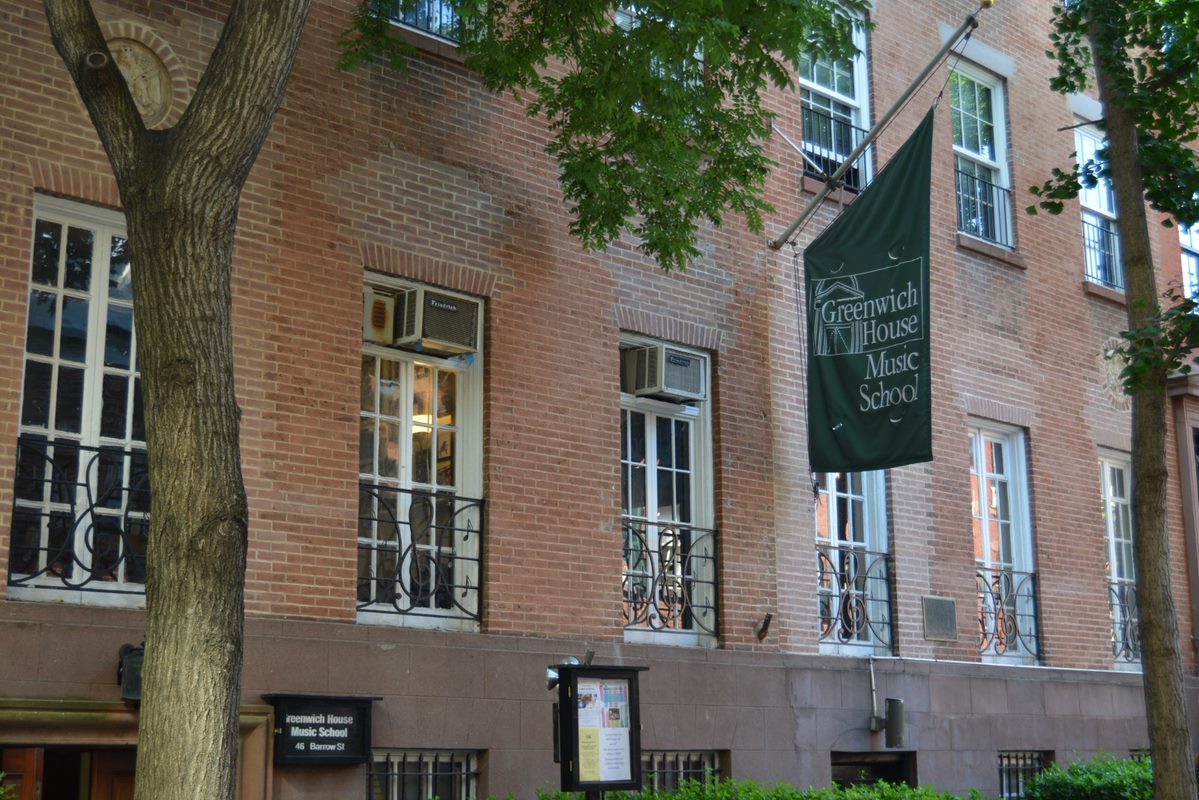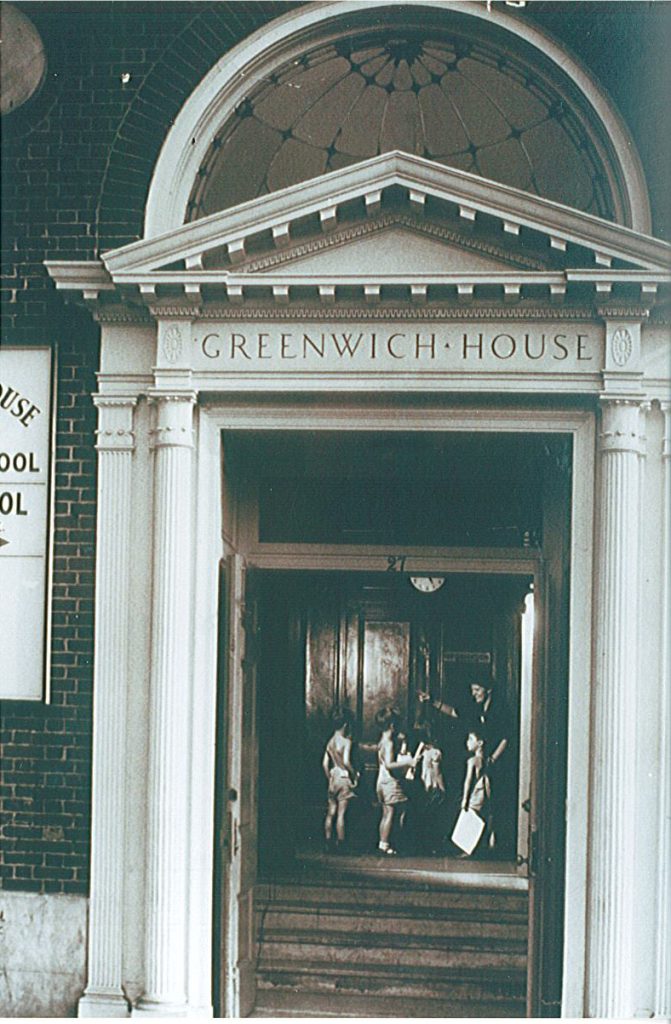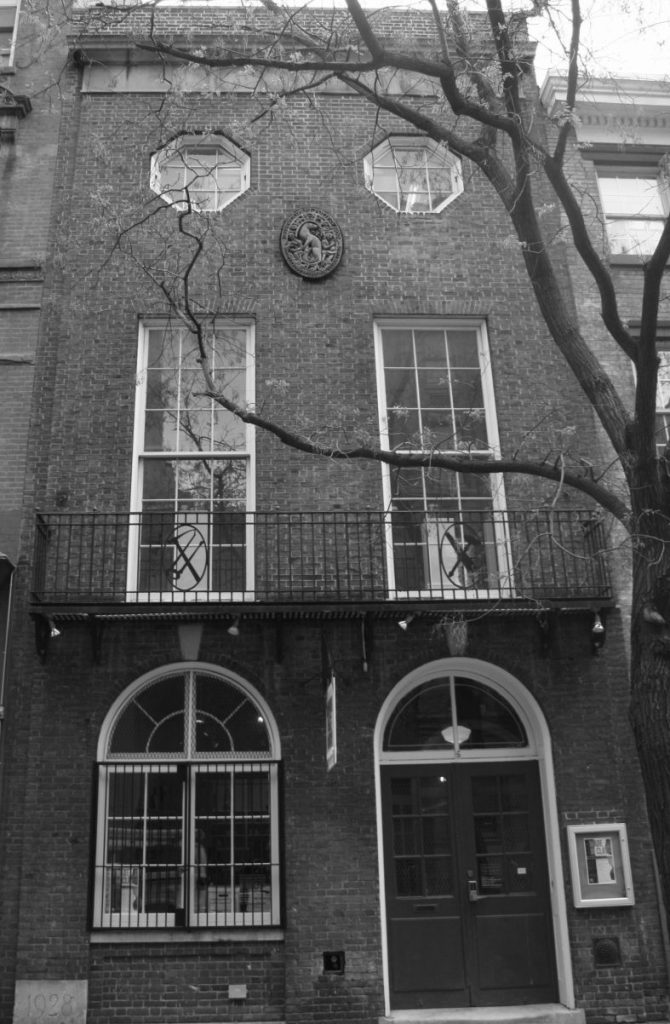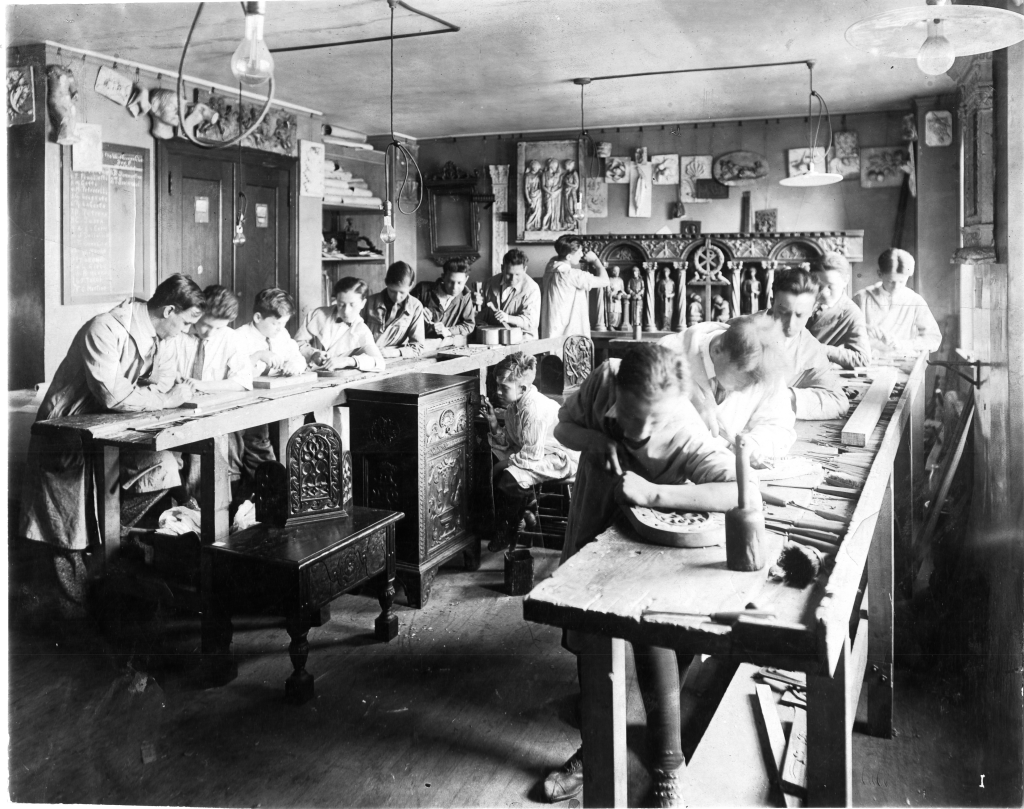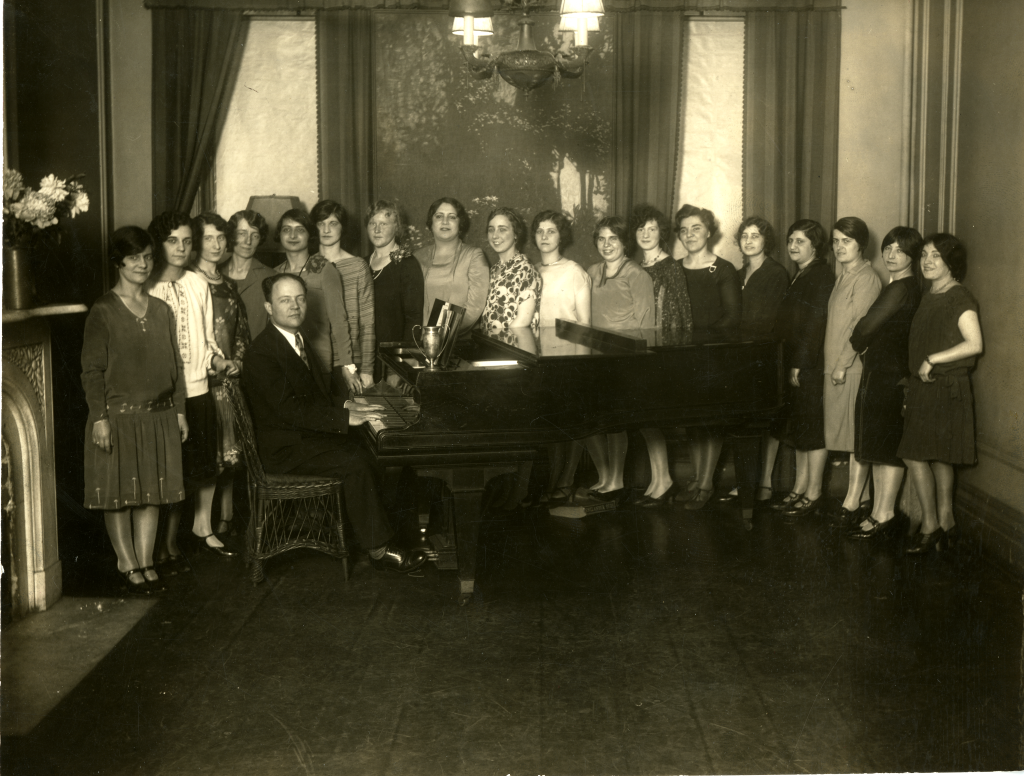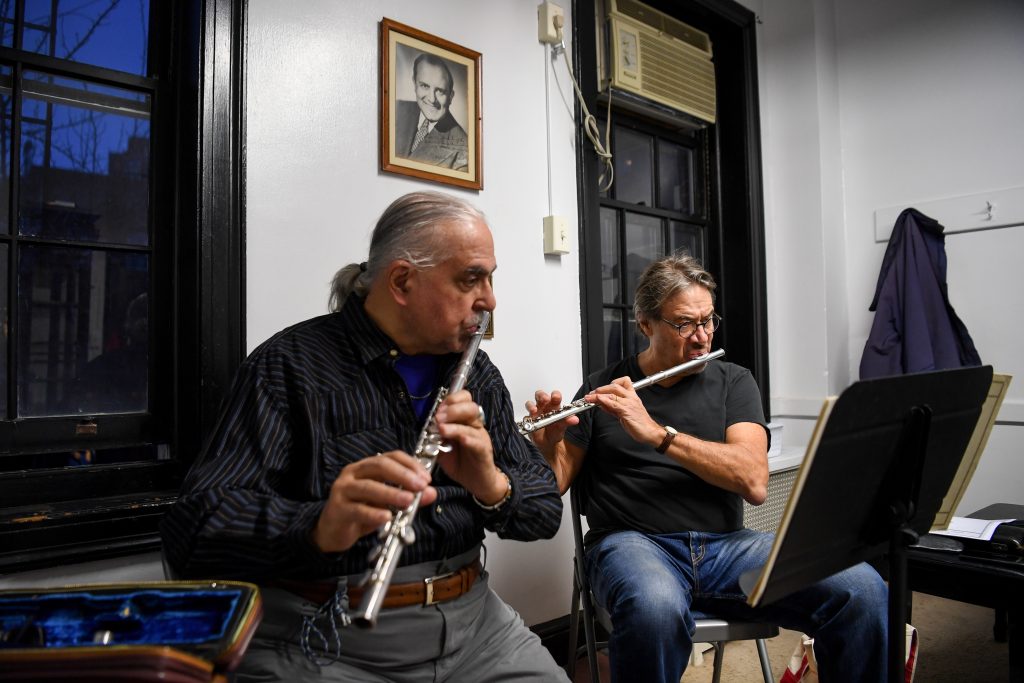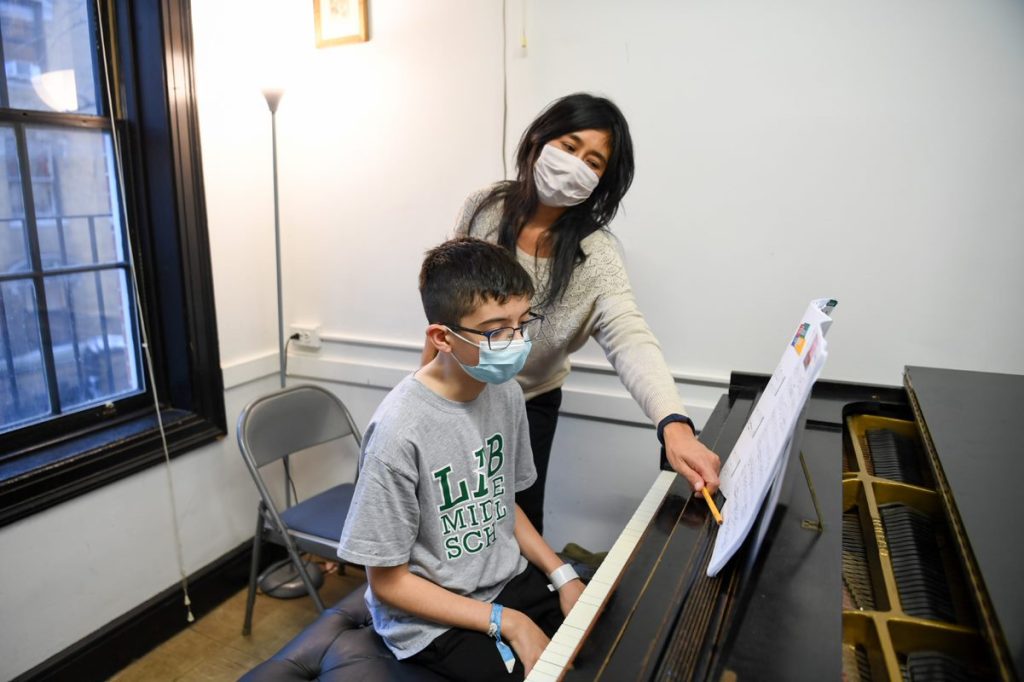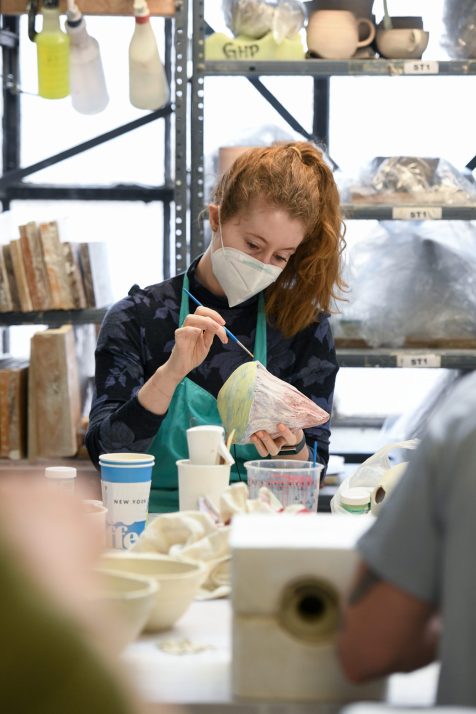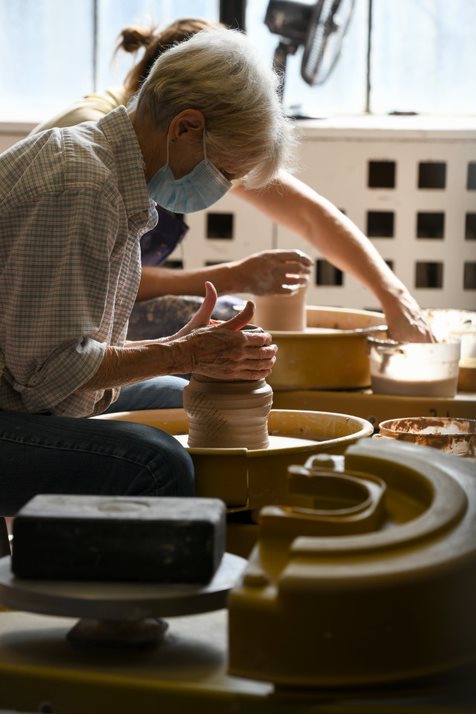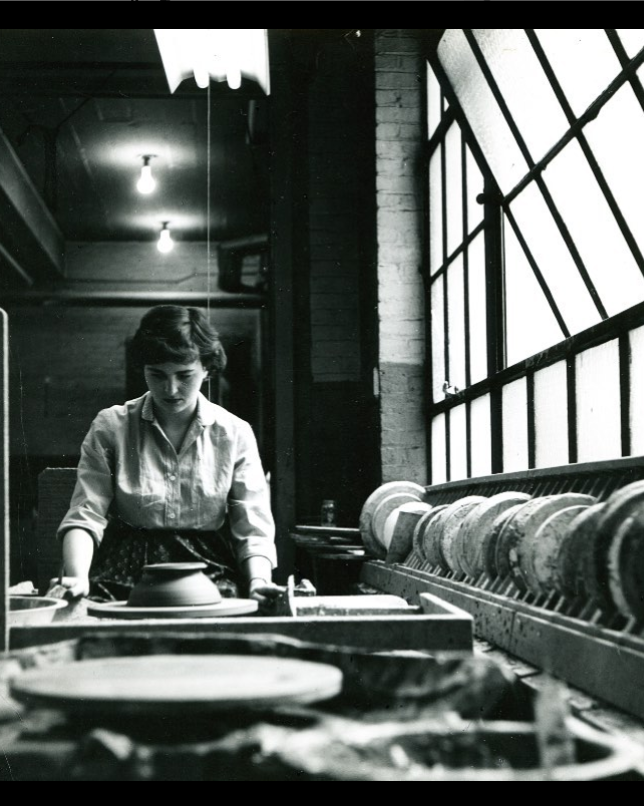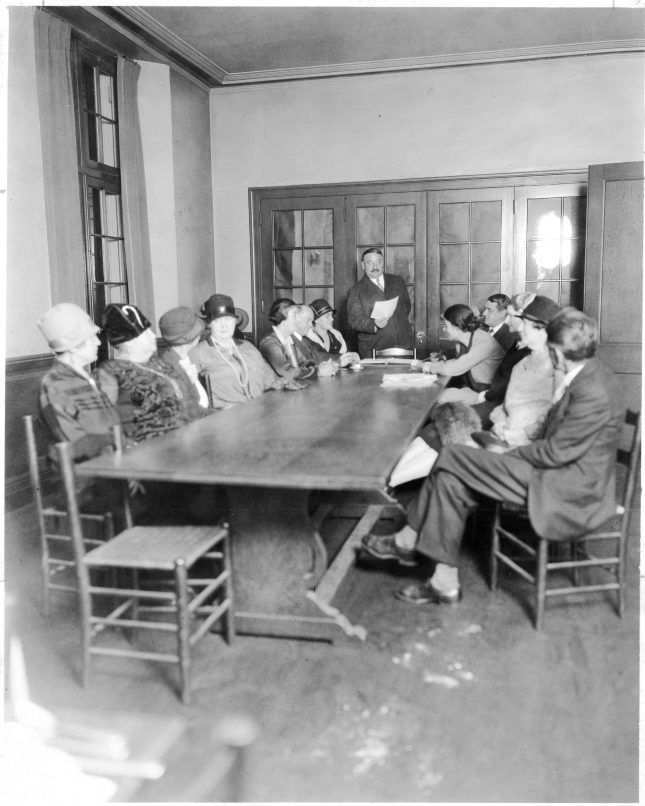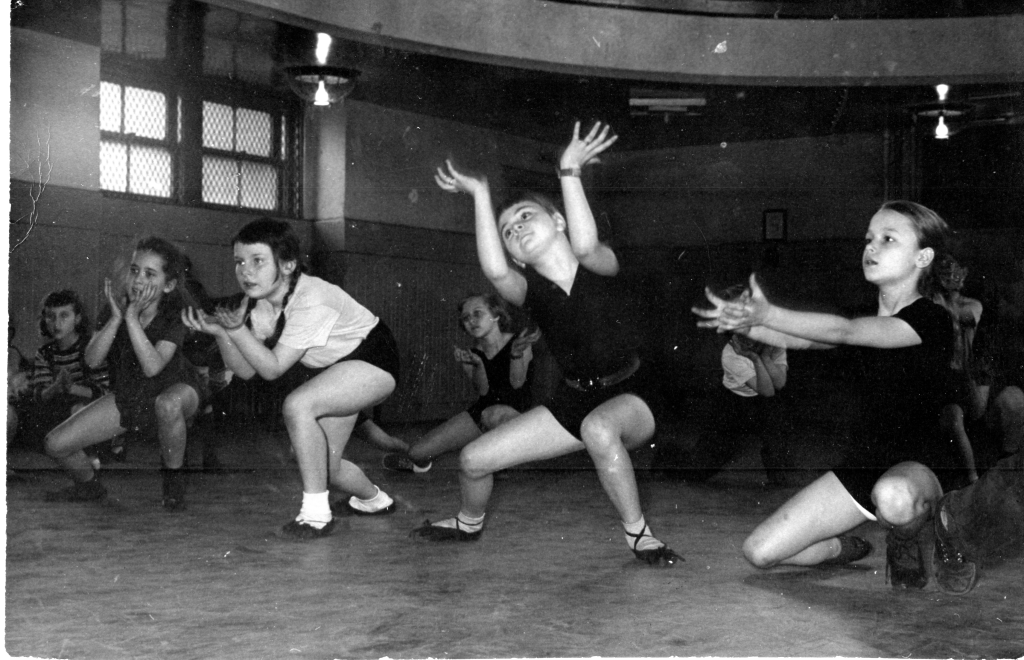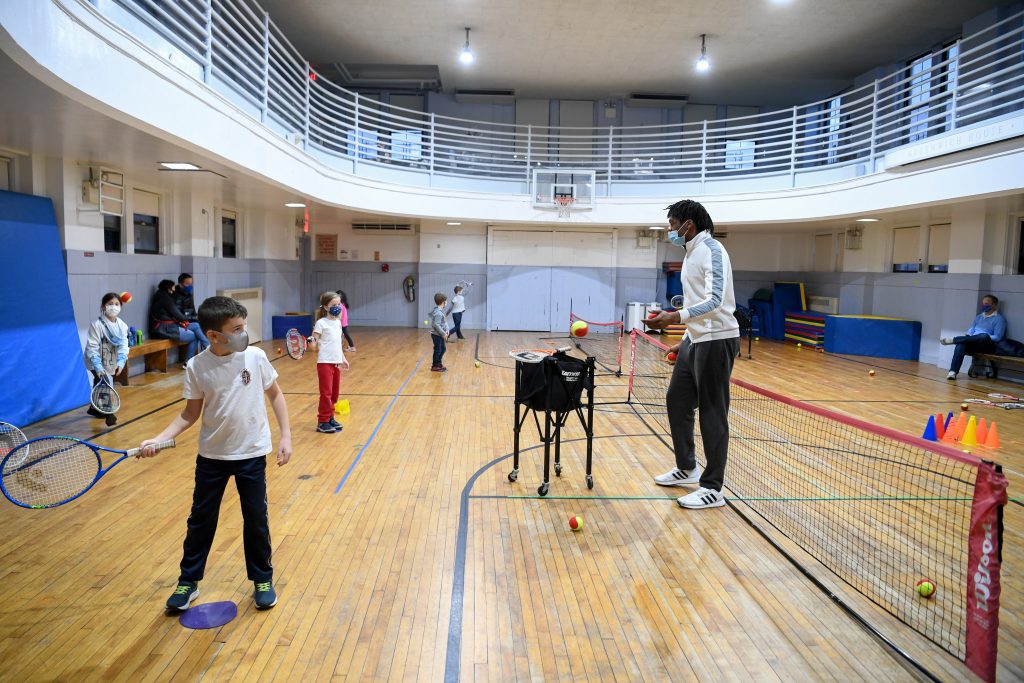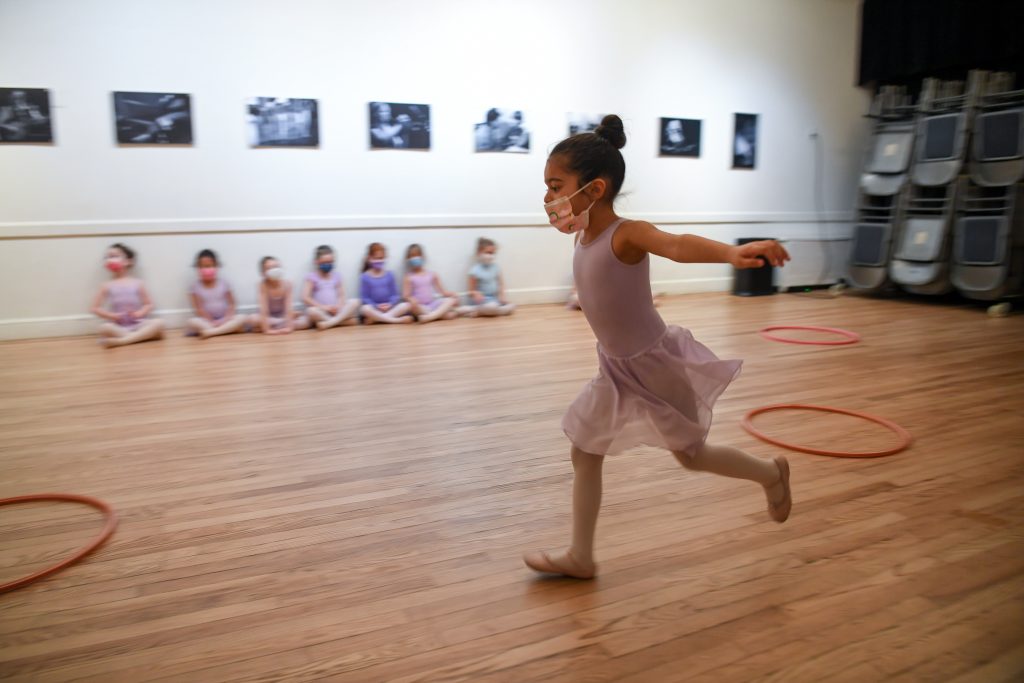Greenwich House is a century-old gem hiding in plain sight within reach of everyone in New York City. Designed by Delano & Aldrich, the three buildings have an architectural grandeur from the early 1900s and yet are a contemporary hive of creativity, learning, social services, and community. In November 2022, Greenwich House celebrated its 120th anniversary and can look back over a long and distinguished history of serving the community. Today, the organization is more lively than ever with its well-known Greenwich House Pottery, Greenwich House Music School, summer programs, and social services.
“When I first came to this space two years ago, I was genuinely blown away by the extent and quality of the services being offered and amazed at the crackle of energy. It is truly a magical space,” said Darren Bloch, CEO of Greenwich House. “We are all about serving and adapting to the needs of the community. We are the care takers of this legacy. We realize how much the arts, culture, and making have been baked into the community over the past century.”
Bloch explained that Greenwich House is, in fact, three historic buildings, 16 Jones Street, 46 Barrow Street, and 27 Barrow Street (headquarters), that provide 60,000 square feet under management. The organization has an additional six sites in the West Village and downtown Manhattan, and all together manages 150 full time employees and 300 part time seasonal staff and faculty. Half of the Greenwich House’s work is health and human services, including five older adult centers, and the other half is the arts and cultural classes, the nursery and summer schools. Greenwich House provides health services addressing addictions, trauma, anxiety, and depression. “We stay true to our core mission of being progressive minded and serving the deep needs of this population,” Bloch said.
Founded on Thanksgiving Day in 1902, Greenwich House opened its doors as a settlement house to help New York’s increasing immigrant population adjust to life in a new country. Music lessons started in 1905 and pottery in 1909. The demand for music education was so high that Greenwich House expanded its Music School to a new building. In 1917, the renowned architectural team, Delano & Aldrich, designed Greenwich House’s new headquarters at 27 Barrow Street. It was financed by Gertrude Payne Whitney, and the interior was decorated with hand-painted murals by famous artists, including Daniel Chester French, John Sloan, and James Fraser. Whitney established the Art School at Greenwich House before opening the Whitney Museum of Art. To support the growing arts program, Greenwich House established a Workshop Building at 16 Jones Street in 1928, and in 1948, the Pottery workshop took over, where it still operates today.
In 1963, Greenwich House received a federal grant to establish a Counseling Center, the first walk-in, outpatient counseling center for drug treatment in New York. Twenty years later, in 1987, Greenwich House founded the AIDS Mental Health Project, a first-of-its-kind, which was soon followed by the Children’s Safety Project to provide prevention, counseling and treatment services for children suffering from trauma and abuse. In 1991, primary care service for HIV patients began – the first, and for many years, the only services in the city specifically addressing the needs of those living with HIV/AIDS.
“Greenwich House’s founding mission was to help immigrants lead better lives and bring good music, beauty and joy into the home,” said Rachel Black, director of the music school which currently services each year 400-500 students from 2 to 88 years old and oversees 50 faculty members. “Today, the Music School at 46 Barrow Street is regarded as one of the best places to start young musicians, instilling strong foundational techniques. We also offer ballet and theater programs and extensive programming and opportunities for professional artists.”
Black continued, “We want to teach people fundamentals but also create magic that can change their entire day, we want to create life-long learners. We strive to be a community of education, and to provide resources, such as practice rooms, instruments, audio recording, and concert stages to support the development of professional artists and help keep artists in New York.”
Black is also the co-founder and executive producer of Uncharted, a community concert series for GHMS featuring local artists premiering new work or new collaborations. At one time, well-known musicians, including John Cage, Edgard Verese, Joan Tower, and Meredith Monk played and/or practiced at Greenwich House. Today it continues its progressive bent in theater and music. In 2003, the Barrow Street Theatre began with notable and award-winning plays and in 2019, Ars Nova made Greenwich House Theatre their new downtown home, featuring off-Broadway productions.
Black has also started significant outreach programs in nearby public schools, including PS 3 and PS41 and the NYC Museum School, as well as Healing HeArts, a joint music therapy program with Greenwich House’s Children’s Safety Project, and a fundraiser for the scholarship fund, Play it Forward.
The Greenwich House Pottery is one of the most well-known pottery communities in America. Fabio Fernández, Director, Greenwich House Pottery, spent years in arts management and education, including at Michigan’s Cranbrook Art Museum and the Society of Arts + Crafts in Boston. He explained that there are three program areas in the Pottery: classes and workshops and exhibitions. They can accommodate about 300 people per term and offer 25 faculty. There is slip casting, wheel throwing and hand clay work. The classes are aimed at adults who range from beginners just starting out to professionals showing at local New York galleries. Some of the artists have been there for 40 years as they treasure the space and resources, including tools and kilns, and the six competitive exhibitions each year that draw nationwide talent. The program is progressive and ranges from beginners and functional ceramics to professionals and artists in residency programs.
“There is almost no other place like Greenwich House Pottery,” said Fernandez. “The value proposition here is the history and the importance pottery has played in American ceramics. The location and the historic building distinguish us from other places.” A lot of for-profit ceramic studios have started but they do not match the unique community of Greenwich House and the experience (professionals working alongside beginners) that people are looking for. “There is a seriousness of purpose as well as those who are seeking the therapeutic nature of clay. We still have a waiting list of 140 people with a critical demand for making in clay.” Just to put things in perspective, the Pottery mixes 60 tons of clay from 50 pound bags and creates its own glazes which is part of the educational experience and the training our staff provides.
Adam Welch, the former Director of Greenwich House Pottery and now Executive Director of the Princeton Arts Council, is steeped in the history and development of Greenwich House, said that even from the very beginning, Greenwich House was a place of the arts. Mrs. Whitney was on the board from early on and gave money to start the clay modeling and carpentry programs. The handicraft school became a place to train children outside of the factory environment. Adults started coming too after work and the programs quickly morphed into children and adult classes.
Throughout the century, there were outstanding leaders and directors of the Pottery School who led the community for significant periods of time and left their marks. Greenwich Street Potters for example was for a time a real working studio that earned revenue by creating pottery and ceramics for famous people’s houses and gardens, and a display at the 1939 World’s Fair. Then priorities changed again and it became more of a place for artists, community and classes with top teachers and mentors and visiting artists. “It is all about the importance of materials and learning, and Pottery offers people the opportunity to explore the world and their lives outside of the factories and workplaces. So really, not that much has changed,” said Welch.
Today, Greenwich House offers programs in the arts, education, and social services that enrich the lives of children, families, and older adults, and individuals working to overcome life’s challenges. Its exciting programs offer serious professional advancement for up and coming artists through its top notch teaching and mentorship of artists. The organization provides the resources, including practice rooms, kilns, scholarships, artist-in-residence programs, and even gallery space and concert stages for career defining shows and presentations. No matter what program individuals participate in, everyone receives the care and support they need to live a more fulfilling life.
As with many small, not-for-profit organizations, work on the building and the programs is a constant assessment. Currently Greenwich House is relaunching a fundraising campaign ($1 to $3 million) for the Pottery. After more than 100 years in operation, they are still working with 16th century tools. They are also looking to expand and renovate the Pottery space. The reputation and work emanating from the Pottery is resulting in long waiting lists. Greenwich House is also seeking to expand its music and theater and performing arts spaces, install sound proofing and modernization, and come up with various ways to support aspiring professional artists giving them the time and space to practice their instruments.
Darren Bloch said, “we are constantly thinking about what it looks like to support the Greenwich House ecosystem: helping working artists and educating young people for their entire lives and then supporting them when they are older too. For example, just recently, a grandmother, mother and child came in and all three had touchstones with the school. The grandmother said, ‘it doesn’t really look that different’ and these moments give you goosebumps. That is the legacy of the place.”
On Thanksgiving Day 2022, Greenwich House celebrated 120 years. Learn more about Greenwich House’s history via this short video: https://www.youtube.com/watch?v=tNDU6sEkbvw It may be a bit under the radar but it is right on target.
By Victoria Larson, Publisher, Side of Culture

